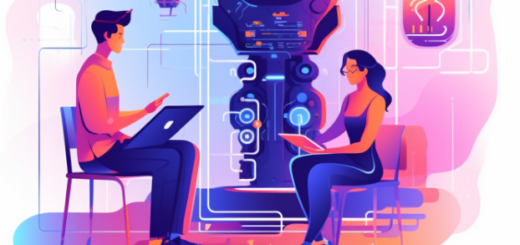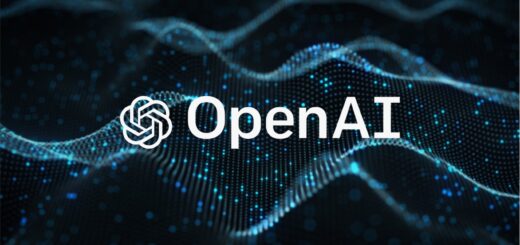Advancements in AI-Powered Code Generation Reshape Software Development

For years, software development has relied on human-written code, requiring developers to manually write, debug, and optimize their work. While AI-assisted coding tools had existed in some form, they were largely limited to autocomplete suggestions or syntax corrections. However, in July 2023, a breakthrough in AI-powered code generation tools was changing how software was written, with models capable of producing entire applications, debugging code autonomously, and even collaborating in real-time with developers.
The release of Meta’s Code Llama, an advanced AI model built specifically for code generation, alongside improvements in OpenAI’s GPT-4-powered coding assistants, signaled a shift toward AI-driven software engineering. These tools were not just assisting developers—they were accelerating software creation, reducing repetitive coding tasks, and even handling complex problem-solving processes with minimal input.
How AI-Powered Code Generation Was Transforming Development
Traditional software engineering required extensive manual effort, from writing boilerplate code to debugging intricate logic errors. AI-powered coding tools introduced a new level of efficiency by:
- Generating entire code structures from natural language descriptions – Developers could describe an application or feature in plain English, and AI would produce the corresponding code.
- Detecting and fixing errors autonomously – AI-assisted debuggers could identify vulnerabilities, optimize performance, and suggest improvements.
- Enhancing developer productivity – AI coding assistants handled repetitive coding patterns, allowing engineers to focus on more complex problem-solving.
With these improvements, AI-driven coding tools were reshaping how developers approached software creation.
Key Applications of AI-Generated Code in Industry
The adoption of AI-driven code generation tools was rapidly expanding across various sectors, where automation and efficiency were critical.
1. AI in Enterprise Software Development
- Large organizations integrated AI code generators into agile development workflows, accelerating project timelines.
- AI-assisted security analysis helped businesses identify potential vulnerabilities before deployment, reducing cybersecurity risks.
2. AI in Game Development and Interactive Applications
- Game developers used AI-powered coding assistants to automate level design, procedural content generation, and AI-driven NPC behavior scripting.
- AI-generated physics engines helped optimize realistic character movements and interactions.
3. AI in No-Code and Low-Code Platforms
- AI-powered development tools enhanced no-code and low-code environments, allowing non-developers to build functional applications.
- Business users leveraged AI to automate workflows, integrate APIs, and create dynamic dashboards without extensive programming knowledge.
By enabling faster and more efficient coding, AI-powered development tools were fundamentally shifting the role of software engineers and product developers.
Challenges and Limitations of AI Code Generation
Despite its promise, AI-powered code generation introduced new challenges and risks that businesses and developers had to address.
1. Code Quality and Maintainability Concerns
- AI-generated code could sometimes be inefficient or contain logic errors, requiring manual review and optimization.
- Developers needed to ensure that AI-assisted code remained scalable, readable, and well-documented.
2. Intellectual Property and Licensing Risks
- AI models were trained on publicly available code, raising concerns about whether AI-generated code might unintentionally reproduce copyrighted material.
- Businesses sought clarity on who legally owns AI-generated code in commercial applications.
3. Dependence on AI and the Future of Software Engineering
- As AI coding assistants took on more responsibilities, some feared over-reliance on AI might reduce human developers’ problem-solving skills.
- Companies focused on retraining developers to work effectively alongside AI, ensuring a balance between automation and expertise.
Addressing these challenges was key to ensuring that AI-enhanced software development remained efficient, ethical, and scalable.
What’s Next for AI-Powered Software Development?
With AI-driven coding tools advancing rapidly, the next stage of development was expected to focus on:
- Fully autonomous software development pipelines – AI would soon be capable of writing, testing, and deploying applications with minimal human intervention.
- AI-powered collaborative coding environments – AI would assist in real-time pair programming, acting as an intelligent coding partner.
- Adaptive AI coding assistants – AI models would learn individual developers’ coding styles, offering personalized suggestions and efficiency improvements.
As AI-powered coding tools matured, businesses and developers stood at the frontier of a software engineering revolution, where automation and intelligence combined to push the boundaries of digital innovation.
A Defining Moment for AI-Generated Code
The release of Meta’s Code Llama and continued advancements in GPT-4-powered coding assistants in July 2023 marked a major milestone in AI-assisted software engineering. What was once a tool for simple syntax suggestions had evolved into an intelligent assistant capable of writing, debugging, and optimizing code at scale.
However, with this progress came important questions about code security, AI transparency, and the evolving role of software engineers. Ensuring AI-powered coding tools were developed and implemented responsibly would be crucial in shaping the next era of digital transformation.




